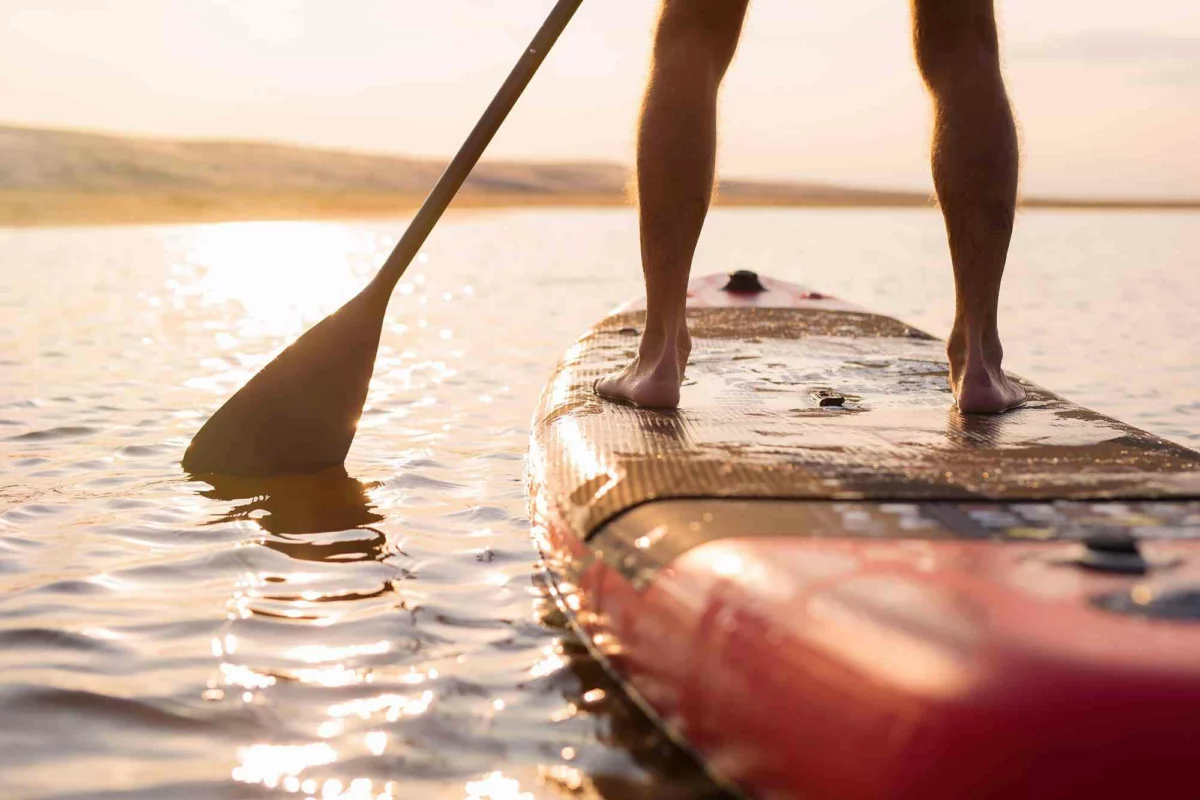- The Great Cornwall Guide
- Destinations
- Things to do
- Beach Guide
- Food & Drink
- Properties
- Journal
- Golden Lobster Reviews
- Destinations

Although paddleboarding might seem a recent phenomenon, the first paddleboard was constructed in the 1930s, and resembles the old, simply-designed Hawaiian paddleboards used for travel and fishing.
Paddleboards are thicker and longer than the average surfboard. Paddle boarding is believed to be easier than surfing as it can be done on calm, flat water with no wind, where only a basic level of balance and reaction skills are needed. But surfers also tend to enjoy it on a day when there are no or small waves.
Basically, beginners should opt for wider, thicker and longer boards for greater stability on, ideally, a flat body of water. A leash keeps you attached to your board and a paddle helps propel you along. If you’re unsteady, start on your knees.
Stand Up paddleboarding (SUP) is a fun activity for lakes, rivers and oceans. Despite looking graceful and less athletic than surfing, it does give you a great full body core workout, brilliantly burning off calories. For others, the benefit is More mindful, getting the angle of the paddle just right and using propelling yourself across water as a form of meditation.
It is also perfect for all age groups, body types and ability levels. Some people paddleboard together (a great couples’ option) or even take the dog along. Some people even use a paddleboard as a yoga base.
There are lots of SUP providers dotted around Cornwall.
In Bude, you can start learning in the sea pool with Rob McPaddling.
Check out providers in our links in the Activities and Wellbeing section of our Guide.
Categories: Cornwall Watersports, Nature Activities & Clubs